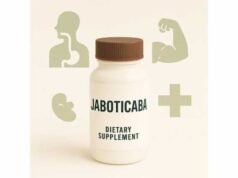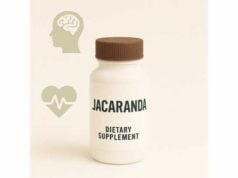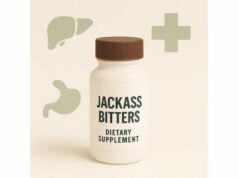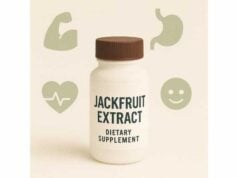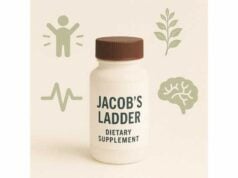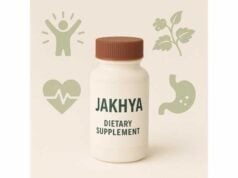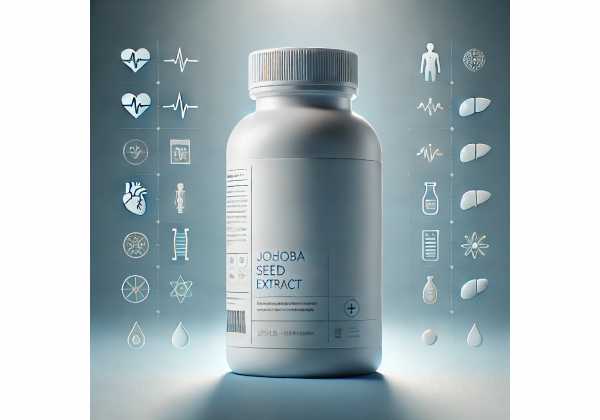
Jojoba seed extract is a versatile skincare ingredient made by extracting the bioactive fractions from the seeds of Simmondsia chinensis. Unlike jojoba oil (a liquid wax expressed by pressing the seeds), jojoba seed extract is typically prepared with solvents such as water, glycerin, or alcohol to pull out polar compounds—including phenolics, flavonoids, and minor unsaponifiables—that don’t fully appear in the pressed oil. In modern formulas, you’ll find it used alongside or instead of jojoba oil to enhance barrier comfort, redness reduction, and antioxidant support without heaviness. Because the extract contains little to no triglyceride “oil,” it’s often favored in lightweight serums, eye creams, and scalp tonics where slip is welcome but shine is not. In this guide, you’ll learn how jojoba seed extract differs from jojoba oil, what benefits you can reasonably expect, how to use it across face, body, and hair routines, sensible dosing in percentages and drops, safety and allergy considerations, and what today’s laboratory and cosmetic-safety literature actually supports.
Key Insights
- Water/glycerin or hydroalcoholic jojoba seed extracts supply phenolics and soothing components that complement jojoba oil’s emollience.
- Practical benefits: barrier comfort, reduced visible redness, improved skin feel, and lightweight moisturization without greasiness.
- Typical leave-on use levels: 0.5–3% in serums and lotions; spot use: 1–3 drops (≈0.05–0.15 mL) on damp skin.
- Patch test first; avoid if you’ve had cosmetic contact allergies or react to Simmondsia chinensis derivatives.
Table of Contents
- What is jojoba seed extract and how it works
- Benefits you can reasonably expect
- How to use it, step by step
- Dosage, formats, and layering
- Side effects, precautions, and who should avoid
- Evidence: what the research supports today
What is jojoba seed extract and how it works
Extract vs oil: why the distinction matters.
Pressed jojoba oil is a liquid wax rich in long-chain wax esters (C38–C44) that mimic human sebum, producing excellent slip and barrier support. Jojoba seed extract, in contrast, is made by soaking the seed material in a solvent system (often water/glycerin or hydroalcoholic), then filtering and standardizing the solution. This captures polar microconstituents—phenolics (e.g., tannin-like compounds), flavonoids, phytosterols, and small antioxidants—that are present in the seed but sparsely represented in the oil phase.
What those actives do on skin.
- Soothing signaling: Extracts can downshift pro-inflammatory mediators in model systems (think IL-6, IL-8, TNF-α), which aligns with reduced visible redness after shaving, exfoliation, or retinoid use.
- Barrier synergy: While the oil slows transepidermal water loss (TEWL) by forming a breathable film, the extract hydrates and conditions within a water-based base, improving feel and flexibility without adding sheen.
- Antioxidant support: Phenolics can neutralize oxidants in vitro. In skin care, this translates to small but useful help against environmental stressors when layered with sunscreen and humectants.
- Compatibility: The extract’s aqueous nature mixes well into serums, gels, and emulsions where oils might destabilize or feel heavy.
For hair and scalp.
Aqueous jojoba seed extracts fit leave-on scalp products because they hydrate, soothe, and add slip without an oily film. On hair fibers, they reduce friction and static when used in conditioners or sprays, especially when paired with cationic conditioning agents.
Form variations to know.
- Glycerin/water extracts: Best for hydrating serums and toners; gentle and humectant-rich.
- Hydroalcoholic extracts: Slightly higher phenolic load; common in astringent lotions or scalp tonics; may tingle on very sensitive skin.
- Liposomal or encapsulated extracts: Improve delivery and texture in sophisticated formulas.
What jojoba seed extract does not do.
It isn’t a sunscreen, prescription anti-acne therapy, or a hair-regrowth drug. It does not replace ceramide-rich moisturizers in severe barrier damage, but it complements them well.
Benefits you can reasonably expect
1) Lightweight barrier comfort without greasiness.
If rich creams overwhelm you, jojoba seed extract offers the “comfort” side of moisturization in a water-based system. It pairs well with glycerin or hyaluronic acid: the humectants pull water in; the extract softens and smooths; a light emollient layer (from your moisturizer) seals the deal. Result: less tightness, fewer micro-flakes, and an even surface that takes makeup better.
2) Calm-looking skin after irritation triggers.
Shaving, waxing, chemical exfoliants, retinoids, winter wind—these stressors can spike visible redness. Formulas with jojoba seed extract frequently reduce that over-reactive look, especially when layered immediately after trigger steps. Expect subtle, gradual improvements rather than instant erasure; combine with smart habits (lukewarm water, gentle cleansers, fragrance-free routines).
3) Support for acne-prone complexions.
Unlike heavy occlusives, an aqueous jojoba extract introduces comfort without filming over pores. It plays nicely with benzoyl peroxide, retinoids, and azelaic acid, helping users stick with treatments that otherwise feel too drying. Bonus: in combination products, low alcohol levels can improve penetration of actives while the extract buffers sting.
4) Softer beard, calmer post-shave feel.
Applied right after shaving (face or body), jojoba seed extract toners or gels reduce tug-and-drag afterfeel, soften stubble regrowth, and dial down the pink flush many people dislike. Men and women both benefit on underarms or legs.
5) Scalp comfort and easier detangling.
In light scalp tonics, jojoba extract hydrates skin between washes without weighing roots down. In sprays and leave-in conditioners, it reduces friction, static, and “squeak,” supporting curl pattern and color hold.
6) Ingredient synergy inside modern formulas.
Jojoba seed extract frequently appears alongside panthenol, allantoin, beta-glucan, niacinamide, or aloe. The extract contributes calming and slip; partners contribute hydration, barrier cofactors, or tone-evening—creating a stacked, well-tolerated effect greater than any piece alone.
Realistic expectations.
- You’ll notice feel and comfort first—within days.
- Visible tone and texture improvements emerge over 2–6 weeks with consistent use.
- It won’t erase deep wrinkles or lift tissue; think smoother, better-behaving skin, not structural change.
How to use it, step by step
Face (daily routine)
- Cleanse with a gentle, low-foam cleanser; pat until damp, not dry.
- Hydrate with a humectant serum (glycerin or hyaluronic acid).
- Treat with jojoba seed extract: apply your extract-containing serum or toner across face and neck. If using a stand-alone liquid, press 3–6 drops (≈0.15–0.3 mL) into damp skin.
- Seal with a light moisturizer to lock in water.
- Daytime: finish with broad-spectrum sunscreen; extracts support comfort but do not provide UV protection.
Evening with actives
- After retinoids or exfoliating acids, wait a few minutes, then apply an extract serum to buffer sting while keeping the routine light.
- For reactive zones (sides of nose, corners of mouth), tap an extra drop where flaking happens.
Shaving and post-procedure comfort
- Pre-shave: splash a jojoba extract toner to add slip under gel.
- Post-shave: apply a thin layer to reduce redness and tightness; follow with fragrance-free moisturizer if needed.
- After waxing or dermaplaning: once skin temperature settles (30–60 minutes), press on a few drops and avoid fragrances for 24 hours.
Body care
- Right out of the shower, while skin is damp, smooth on a body serum containing 0.5–1% jojoba seed extract; sandwich with a lotion to seal.
- For rough areas (elbows, knees), layer an extract serum under urea or lactic-acid lotions at night.
Scalp and hair
- Scalp tonic (between washes): part hair, place 0.5–1 mL across scalp, massage briefly; let dry.
- Leave-in spray: mist mid-lengths and ends to reduce static and improve slip, then style as usual.
- Curl refresh: mix a pump of leave-in conditioner with a few drops of extract-rich serum; scrunch into curls.
Pro tips
- Press, don’t rub: pressing reduces friction on sensitized skin.
- Keep routines fragrance-free if you’re reactive; add scent (if at all) to haircare instead.
- For extremely oily skin, choose gels with alcohol-free or low-alcohol extract vehicles to avoid rebound shine.
Dosage, formats, and layering
Topical percentages (leave-on products)
- Face serums and essences: 0.5–2% jojoba seed extract for daily comfort; up to 3% in targeted soothing formulas.
- Eye creams and sensitive-skin gels: 0.2–1%, paired with panthenol or allantoin.
- Lotions and creams: 0.5–1.5% alongside ceramides and cholesterol.
- Scalp tonics: 0.5–2% in alcohol-free or low-alcohol vehicles.
- Hair leave-ins/sprays: 0.2–1% to reduce static and improve combability.
Drops and milliliters (at-home use)
- Face/neck: 3–6 drops (≈0.15–0.3 mL) over damp skin, once or twice daily.
- Reactive spots: 1–2 drops as needed, then moisturizer.
- Scalp: 0.5–1 mL per application, 1–3×/week.
- Mid-lengths/ends: a few sprays or 1–2 pumps of an extract-containing leave-in.
Layering order
- Water-based humectants (HA/glycerin).
- Jojoba seed extract serum/toner (aqueous).
- Actives that can layer over water (e.g., niacinamide).
- Emollient cream or lotion.
- Sunscreen (AM only).
- Makeup.
With exfoliants and retinoids
- If you sting easily, sandwich: apply extract before and after your active (a thin film first, then active, then another thin layer).
- Avoid high alcohol vehicles the same night as strong acids on sensitive skin.
With oils and butters
- Pairing an extract serum under jojoba oil or shea-rich creams works well in winter: the extract brings calming and slip; the oil/cream seals moisture.
How often?
- Face: 1–2×/day is typical.
- Scalp: 1–3×/week between washes; daily if very dry (use lighter tonics).
- Hair: as needed for detangling or frizz control.
When to reduce dose
- If makeup pills or sheen builds, cut your extract layer by 1–2 drops or move it to nighttime only.
- If you’re acne-prone and see new closed comedones, pause for 1–2 weeks, then reintroduce at half the amount.
Side effects, precautions, and who should avoid
Overall safety picture.
Jojoba derivatives are widely used and generally well tolerated in cosmetics. Compared with highly unsaturated seed oils, jojoba’s chemistry is oxidation-resistant, which lowers the risk of rancid-odor irritation over time. For extracts, safety depends on both the jojoba material and the solvent system (water/glycerin vs hydroalcoholic) used to prepare it.
What can go wrong—and how to prevent it.
- Transient tingling or dryness: more common with alcohol-containing tonics. Switch to glycerin/water-based versions or apply over damp skin.
- Allergic contact dermatitis (rare): presents as persistent redness, itching, or small bumps within 48–72 hours. Patch test new products: apply to the inner forearm twice daily for three days before facial use.
- Follicular overload or milia: unlikely with aqueous extracts, but can occur if stacked under heavy occlusives. Use less product and simplify layers.
- Eye irritation: avoid the waterline; if contact occurs, rinse with water.
Who should use extra caution or avoid.
- History of cosmetic allergies or eczema flares: patch test first; favor fragrance-free formulas.
- Active dermatoses (eczema, psoriasis, seborrheic dermatitis): extracts can aid comfort but are not treatments; coordinate with your dermatologist.
- Pregnancy and breastfeeding: topical use is generally acceptable; if your extract includes essential oils or high alcohol, choose gentler versions.
- Children: small amounts on intact skin are typically fine; avoid under occlusive diapers unless advised by a clinician.
Interactions with other ingredients.
- Plays well with niacinamide, panthenol, ceramides, azelaic acid, and retinoids (as a buffer).
- Avoid layering strong essential oils at high percentages over inflamed skin; keep total fragrance low to minimize sensitization risk.
- Does not replace sunscreen or prescription therapies.
Stop and seek care if you develop hives, spreading rash, facial swelling, wheeze, or persistent eye irritation. For chronic conditions that worsen despite gentle care, consult a healthcare professional.
Evidence: what the research supports today
Chemistry and composition.
Reviews of Simmondsia chinensis consistently describe jojoba’s unique wax esters and a complement of phenolic and sterol fractions obtainable by solvent extraction. These fundamentals explain why oil and extract behave differently in formulas: the oil excels as a stable emollient and film-former, while the extract supplies water-compatible calming and antioxidant components.
Soothing and anti-inflammatory signals.
Preclinical and ex vivo human-skin models report reductions in inflammatory mediators after exposure to jojoba derivatives, with accompanying signals for matrix support (e.g., procollagen III and hyaluronic acid synthesis). These are mechanistic hints—not clinical proof—but they align with users’ experience of less visible redness and better texture over time.
Barrier and moisturization outcomes.
Because jojoba oil resists oxidation and mimics sebum, it reduces TEWL and improves flexibility when used in creams and balms. Aqueous seed extracts complement this by enhancing the water phase of formulas: hydration, slip, and comfort in serums and toners, especially for those who avoid heavy occlusives.
Comedogenicity and tolerability.
Large cosmetic-safety assessments classify jojoba derivatives as low sensitizers with low irritation potential, though genuine allergies are possible. In practical use, the extract’s light, water-compatible profile is well-tolerated even in acne-prone skin when amounts are modest and fragrance is low.
What we still need.
- Larger, well-controlled human trials measuring redness, TEWL, and user-perceived comfort against placebo.
- Standardized extract specifications (phenolic markers) so labels communicate strength, not just the INCI name.
- More scalp studies looking at itch, scale, and tolerability in real-world routines.
Bottom line.
Jojoba seed extract is a smart, lightweight calmer that slots into modern routines: it smooths, hydrates, and supports comfort, particularly for sensitive or combination skin and for scalp care. Use it for feel, finish, and resilience—not as a silver bullet—and expect best results when you pair it with sunscreen, a gentle cleanser, and a barrier-savvy moisturizer.
References
- Jojoba Oil: An Updated Comprehensive Review on Chemistry, Pharmaceutical Uses, and Toxicity 2021 (Systematic Review)
- Topical application of jojoba (Simmondsia chinensis L.) wax enhances the synthesis of pro-collagen III and hyaluronic acid and reduces inflammation in the ex-vivo human skin organ culture model 2024 (Experimental, Ex Vivo)
- Bioactivities of Jojoba Oil Beyond Skincare 2024 (Review)
- Anti-inflammatory effects of jojoba liquid wax in experimental models 2005 (Comparative Study)
- Final Report on the Safety Assessment of Jojoba Oil and Jojoba Wax 1992 (Safety Assessment)
Disclaimer
This article is for education and general information. It is not a substitute for professional medical advice, diagnosis, or treatment. Always consult a qualified healthcare professional about persistent skin conditions, allergies, and medication interactions. If you develop irritation, hives, swelling, or breathing difficulty after using a product containing jojoba seed extract, stop use and seek medical care.
If you found this guide useful, please consider sharing it on Facebook, X (formerly Twitter), or your preferred platform, and follow us for more evidence-informed skincare and wellness content. Your support helps us continue producing high-quality resources.

